Measurements
Simultaneous fluorescence and gas exchange measurements over the same sample area provide compounding value because the data can reveal more about the sample. The LI-6800 controls environmental conditions for the duration of a measurement, preventing multiple parameters from confounding the plant responses, ensuring more repeatability and confidence in the results.
Gas exchange
Unsurpassed for CO2 and H2O gas exchange at the leaf level or CO2 exchange of aquatic samples, the LI-6800 provides direct measurements of CO2 uptake to characterize the photosynthetic assimilation rate of samples.
Features and benefits
- Long-lasting, durable, Advanced Polymer leaf gaskets ensure a good seal around the irregular leaf surfaces, while rebounding quickly between measurements.
- High flow rates enable the system to characterize photosynthesis from large leaves, while precise gas analyzers enable the measurement of very low photosynthesis rates.
- IRGAs in the sensor head, excellent mixing of sample air, and high flow rates through the sample volume and IRGA tightly couple the leaf’s response and the LI-6800’s measurement.
- IRGA matching to remove offsets, so you can measure the true differential between sample and reference cells. Matching can be done manually, automatically, or across a range of CO2 and H2O concentrations (range matching) to save time and suit your experimental protocols.
Dynamic Assimilation™ Technique
The LI-6800, equipped with the 6800-01A Fluorometer, is the only instrument capable of the Dynamic Assimilation Technique. It allows you to collect data for full response curves in a fraction of the time required by steady state measurements. In contrast with the RACiR method, the Dynamic Assimilation Technique does not depend on empirical corrections and is traceable to first principles of gas exchange measurements.
The Dynamic Assimilation Technique is based on a reformulation of the steady-state equation that enables you to measure assimilation curves. Dynamic assimilation data are comparable in uncertainty to traditional survey data. The increase in variability is typically offset by higher data density.


The LI-6800, equipped with the 6800-01A Fluorometer, is the only instrument capable of the Dynamic Assimilation Technique.
For details, see
Saathoff, A. J., & Welles, J. (2021). Gas exchange measurements in the unsteady state. Plant, Cell & Environment, 44(11), 3509–3523. https://doi.org/10.1111/pce.14178
Chlorophyll a fluorescence
Chlorophyll a fluorescence measurements are a distinct application of the LI-6800. Chlorophyll a fluorescence measurement provides insights into the energy-producing and energy-consuming reactions of photosynthesis.
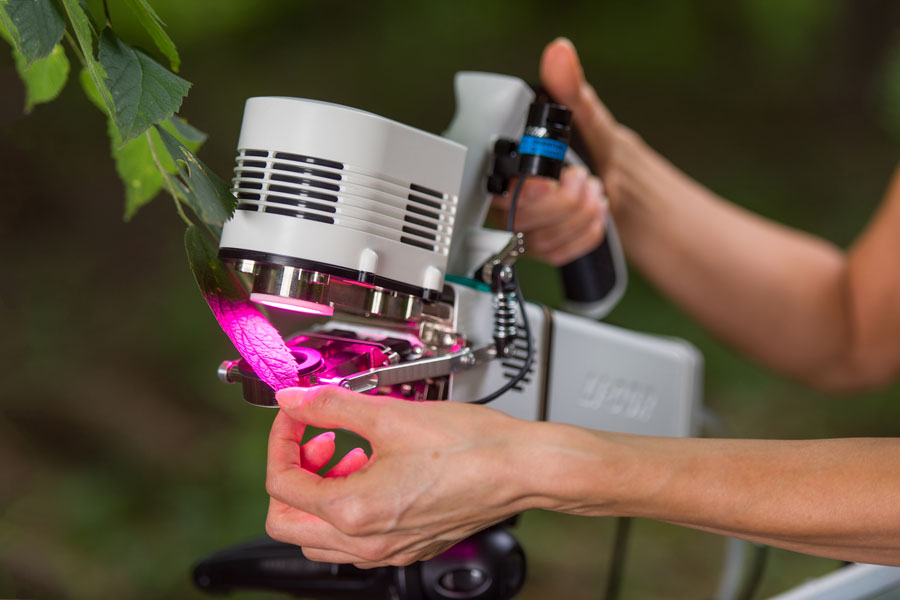
The 6800-01A Fluorometer chamber is for combined gas exchange and fluorescence measurements of leaves and aquatic samples. Featuring a Pulse-Amplitude Modulation (PAM) fluorometer, the chamber measures chlorophyll a fluorescence and gas exchange simultaneously over the same leaf area. It includes interchangeable apertures for 2 cm2 or 6 cm2 leaf area.
Why the 6800-01A Fluorometer?
- Combined gas exchange and fluorescence over the same sample for simultaneous insights into the energy-producing and energy-consuming reactions of photosynthesis.
- Highly uniform optical output over the entire sample area for more controlled measurements.
- User configurable modulation rate and intensity for different research questions and sample material.
- Capable of both rectangular and multiphase flashes—to achieve maximum fluorescence yield and save time.
- High speed detection and logging of fluorescence emission, with sufficiently high frequency for induction kinetics.


Leaf, needle, aquatic, and soil
LI-6800 chambers and light sources measure small to large leaves, needles, shoots, and sprigs—as well as aquatic samples and soil CO2 flux—enabling researchers to expand the scope of their research questions.
For a full list of chambers, including those for bryophytes and insects, see Chambers and Light Sources.
Small leaf measurements
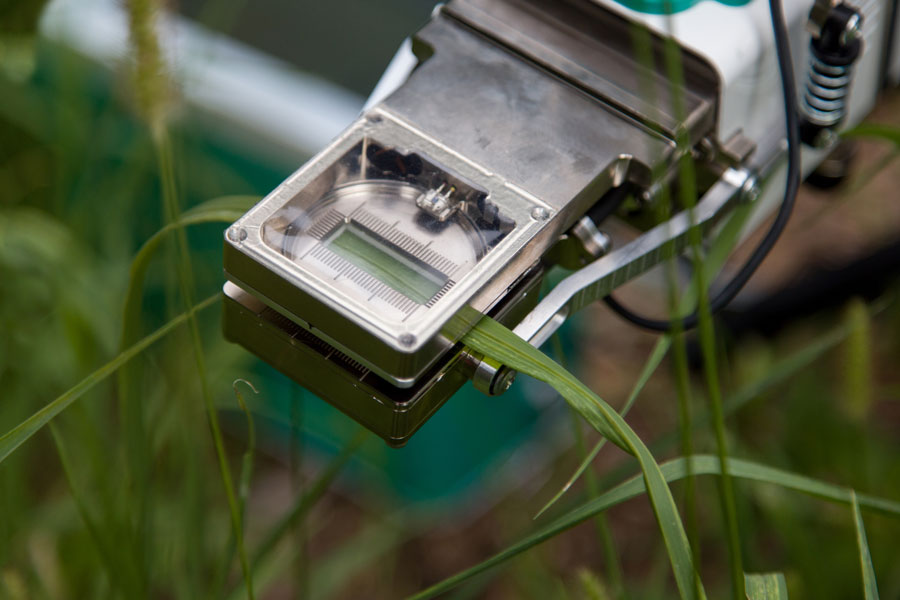
The Clear-top Chamber (6800-12A) measures gas exchange of small to mid-sized leaves under ambient or controlled light. Aperture inserts restrict the sample area to 1x3, 2x3, or 3x3 cm in either side-to-side or front-to-back orientations to accommodate leaves of varying shapes and sizes.
- For leaves that do not fill the apertures, the opening features 1-mm graduations around the perimeter to simply leaf area estimation.
- Compatible with the Small Light Source (6800-02) for controlled red and blue light.
- Independent control of light intensities and spectral blends—both for steady state and programmatically controlled measurements.


Large leaf and needle measurements
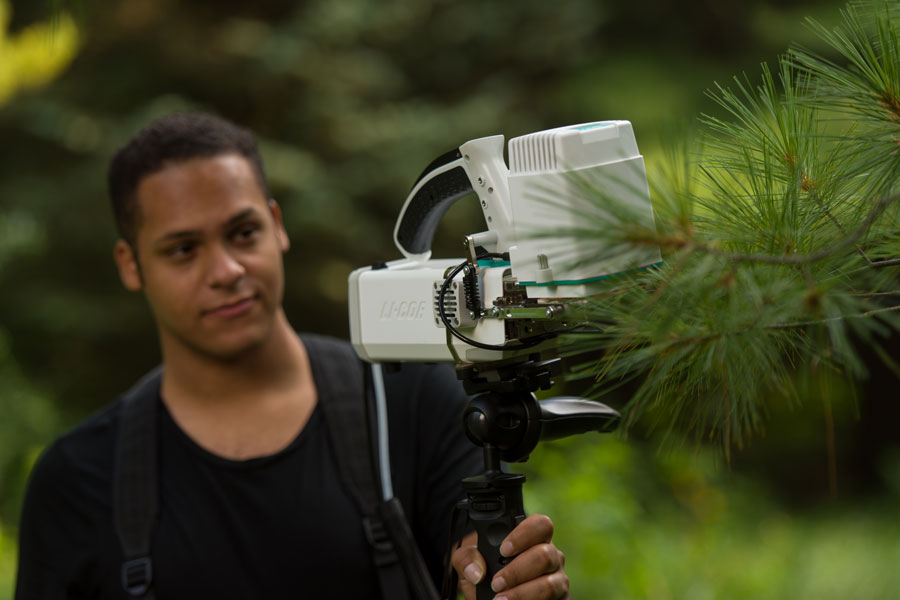
The Large Leaf and Needle Chamber (6800-13) is used for gas exchange measurements from large leaves, sprigs, and shoots. It offers a 6x6-cm opening with 1-mm scale lines to assist with area estimation of leaves that do not fill the aperture.
- The optional Conifer Sprig Kit (9968-271) expands the chamber volume to accommodate shoots and sprigs that do not fit readily into the chamber.
- For measurements under controlled lighting, the large leaf and needle chamber is compatible with the Large Light Source (6800-03) in any configuration—with or without the conifer sprig kit.
- The large light source offers fully configurable red, green, blue, and while illumination with intensities up to 2400, 1000, 2000, and 1500 μmol m-1 s-1 respectively.
- The system provides independent control of light intensities and spectral blends—both for steady state and programmatically controlled measurements.


Aquatic photosynthesis measurements
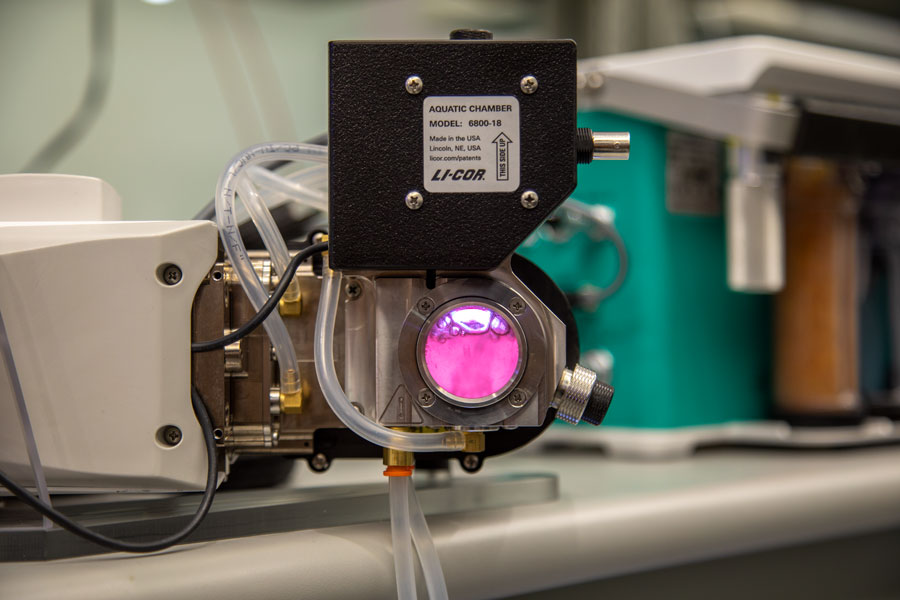
Aquatic photosynthesis measurements based on direct CO2 uptake are uncommon due to the complexity of the measurement. The Aquatic Chamber (6800-18) provides measurements of CO2 exchange and chlorophyll a fluorescence from samples in liquid water, such as algal suspensions, or samples that require high ambient humidity, such as bryophytes.
With the Aquatic Chamber (6800-18), you can measure the photosynthetic response of a sample to controlled parameters such as light, CO2, pH, or temperature. It includes the Aquatic Sample Adapter Kit (9968-338) that accommodates non-liquid samples that require humid air, such as coral, macro algae, sea grasses, and roots.
Features and Benefits
- Achieves rapid equilibration of CO2 in air and CO2 in water in the sample chamber.
- Humidity equilibrator minimizes the water vapor differential between sample and reference IRGAs to optimize computation of the CO2 differential.
- Condensation protection for the system—by measuring temperatures and humidity and adjusting setpoints to prevent condensation.
- Compatible with external recirculating water bath for temperature control over an extended range.
- Support for pH probes; pH measurements are recorded with the dataset.
- Septum port allows ancillary sensors and probes to access the sample during a measurement.
- With samples in water, you can compute optical throughput to estimate photosynthetic absorption.

For more details, read the recent publication by Hupp, et al.
Hupp, J., McCoy, J., Millgan, A., & Peers, G. (2021). Simultaneously measuring carbon uptake capacity and chlorophyll a fluorescence dynamics in algae. Algal Research, (58). https://doi.org/10.1016/j.algal.2021.102399.
Soil CO2 flux

For survey measurements with the Soil CO2 Flux Chamber (6800-09), the LI-6800 operates as a closed system to measure the rate of diffusion of CO2 from the soil surface.
Why use the LI-6800 for soil measurements?
- Patented technologies that are only available in LI-COR soil gas flux systems ensure that soil CO2 flux measurements represent the true flux.
- Patented pressure equilibrator vent to prevent wind from creating pressure excursion that affect measurements.
- Excellent mixing inside the chamber to avoid dead volumes, ensuring an accurate measurement.
- Bellows mechanism to avoid artifacts that may arise from chamber placement.
- Soil moisture/soil temperature measurements recorded with the dataset to assist with computations and interpretation.
- Data processing in SoilFluxPro™ Software for evaluation.
Controlled conditions
By controlling environmental conditions in the chamber for the duration of a measurement, the LI-6800 prevents multiple parameters from confounding the plant responses, ensuring repeatability and confidence in results.
CO2 response curves
By controlling chamber conditions, the photosynthetic response to changes in intercellular CO2 concentration is not confounded by other independent variables. The LI-6800 controls the leaf chamber environment at the setpoint with low variance (n=3; ± standard error of the means).


Leaves are illuminated with constant irradiance, ensuring consistent light-dependent biochemical reaction rates.

Diurnal measurements



Light responses in uniform illumination
The chamber light sources illuminate the leaf with uniform light. Variation is typically less than ± 10% over 90% of the aperture, ensuring that photosynthesis is even across the entire chamber aperture. The average photosynthetic carbon assimilation reflects the true spot-to-spot rate across the enclosed leaf area when the leaf is uniformly illuminated (n = 2; ± standard error from the means).



Quantum efficiency




The flow rate is maintained precisely at the setpoint, which prevents flow from confounding the calculated carbon assimilation rate.

Complementary Measurements with the LI-600
The LI-6800 Portable Photosynthesis System characterizes carbon assimilation and numerous other parameters under controlled chamber conditions. In contrast, the LI-600 Porometer/ Fluorometer records high-speed stomatal conductance measurements on many plants in ambient conditions. Combined, the two instruments record larger, more informative data sets in less time.
For example, use the LI-600 to screen a large population, then use the LI-6800 to measure select individuals in greater detail. Characterize stomatal ratio with the LI-600 and use these measurements in the LI-6800 to improve calculation of important parameters related to stomatal ratio.
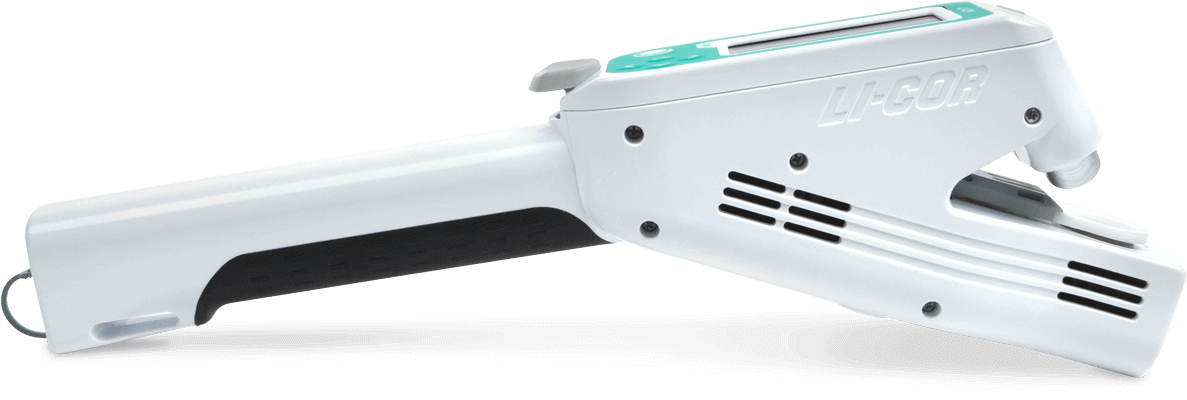 LI-600 LI-600 |
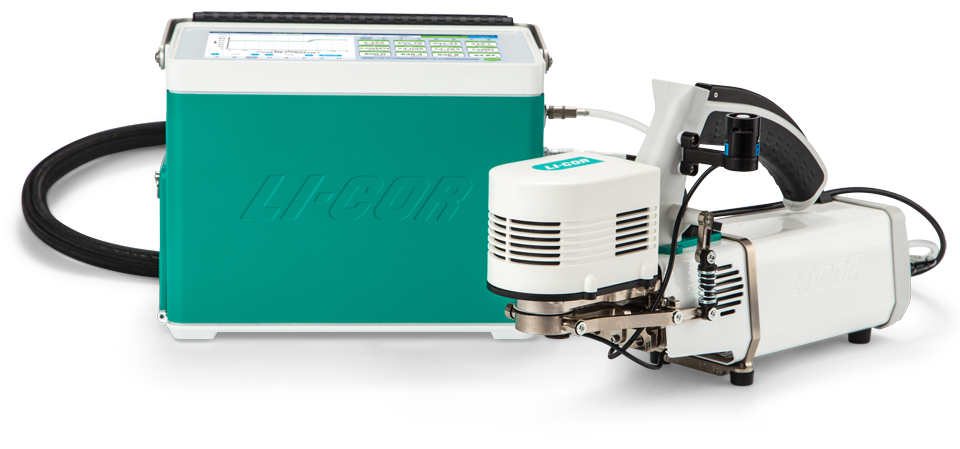 LI-6800 LI-6800 |
|---|---|
| Rapidly screen up to 200 samples per hour to identify candidates for detailed measurements | Measure detailed physiological and photosynthetic parameters, including light response curves and A/Ci curves |
| Measurements in ambient conditions | Measurements in controlled conditions; capable of multiple independent controls, including light, CO2, H2O, and temperature |
| Easy to use, basic configuration options | Sophisticated configuration options in an intuitive graphical interface |
| Chlorophyll a fluorescence in ambient light | Chlorophyll a fluorescence with controlled light; capable of induction kinetics measurements |
Learn more
To provide more information about complementary LI-6800 and LI-600 measurements, we’ve created an application note with case studies and recorded a webinar.
Theory—combined gas exchange and fluorescence
Continue Reading
